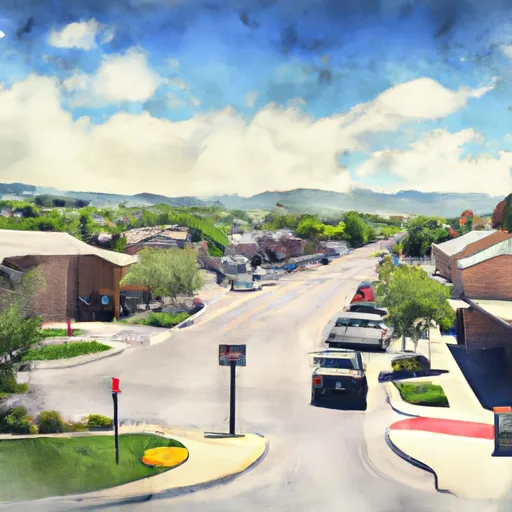-
 Snoflo Premium
Snoflo Premium
Get unlimited access to all our content
With no Ad interruptions! - Start Your Free Trial Login with existing account
Manila
Eden Index
Climate
7.3
•
Recreation
6.6
•
Community
2.9
•
Safeguard
6.0/10

Manila is a small town located in Daggett County, Utah, in the United States. Situated near the Flaming Gorge National Recreation Area, Manila offers a range of outdoor recreational opportunities.
The climate in Manila is classified as high desert. Summers are warm with temperatures averaging in the mid-80s Fahrenheit (around 29°C), while winters are cold, with average temperatures in the mid-20s Fahrenheit (around -4°C). The area receives minimal precipitation, primarily in the form of snow during the winter.
Manila is surrounded by stunning hydrology constituents, with the Green River and the Flaming Gorge Reservoir being major attractions. The Flaming Gorge Reservoir offers excellent fishing opportunities for trout and other game fish. Additionally, visitors can enjoy boating, water skiing, and paddleboarding on the reservoir's pristine waters.
The town is a gateway to the vast Flaming Gorge National Recreation Area, which boasts hiking and biking trails, wildlife viewing, camping, and scenic drives. The region's rugged landscapes, deep canyons, and towering cliffs provide a breathtaking backdrop for outdoor enthusiasts.
In summary, Manila, Utah, provides a unique blend of desert climate, hydrological wonders, and abundant outdoor recreation opportunities, making it an ideal destination for nature lovers and adventure seekers.
What is the Eden Index?
The Snoflo Eden Index serves as a comprehensive rating system for regions, evaluating their desirability through a holistic assessment of climate health, outdoor recreation opportunities, and natural disaster risk, acknowledging the profound impact of these factors on livability and well-being.
Climate Health Indicator (CHI): 7.3
Manila receives approximately
245mm of rain per year,
with humidity levels near 69%
and air temperatures averaging around
8°C.
Manila has a plant hardyness factor of
5, meaning
plants and agriculture in this region thrive during a short period during spring and early summer. Most
plants will die off during the colder winter months.
By considering the ideal temperature range, reliable water supplies, clean air, and stable seasonal rain or snowpacks, the Climate Health Indicator (CHI) underscores the significance of a healthy climate as the foundation for quality living.
A healthy climate is paramount for ensuring a high quality of life and livability in a region, fostering both physical well-being and environmental harmony. This can be characterized by ideal temperatures, reliable access to water supplies, clean air, and consistent seasonal rain or snowpacks.
Weather Forecast
Streamflow Conditions
Upper Green
Area Rivers
Upper Green
Snowpack Depths
Upper Green
Reservoir Storage Capacity
Upper Green
Groundwater Levels
Recreational Opportunity Index (ROI): 6.6
The Recreational Opportunity Index (ROI) recognizes the value of outdoor recreational options, such as parks, hiking trails, camping sites, and fishing spots, while acknowledging that climate plays a pivotal role in ensuring the comfort and consistency of these experiences.
Access to outdoor recreational opportunities, encompassing activities such as parks, hiking, camping, and fishing, is crucial for overall well-being, and the climate plays a pivotal role in enabling and enhancing these experiences, ensuring that individuals can engage in nature-based activities comfortably and consistently.
Camping Areas
| Campground | Campsites | Reservations | Toilets | Showers | Elevation |
|---|---|---|---|---|---|
| Canyon Rim - Flaming Gorge | 15 | 7,439 ft | |||
| Lucerne | 143 | 6,057 ft | |||
| Red Canyon - Flaming Gorge | 8 | 7,420 ft | |||
| Steinaker State Park | 29 | 5,560 ft | |||
| Oaks Park | 11 | 9,277 ft | |||
| Sheep Creek Bay - Flaming Gorge | 16 | 6,050 ft | |||
| Red Springs | 14 | 10,483 ft | |||
| East Park | 21 | 9,050 ft | |||
| Greens Lake - Flaming Gorge | 20 | 7,467 ft | |||
| Antelope Flat - Flaming Gorge | 46 | 6,068 ft |
Catastrophe Safeguard Index (CSI):
The Catastrophe Safeguard Index (CSI) recognizes that natural disaster risk, encompassing floods, fires, hurricanes, and tornadoes, can drastically affect safety and the overall appeal of an area.
The level of natural disaster risk in a region significantly affects safety and the overall livability, with climate change amplifying these risks by potentially increasing the frequency and intensity of events like floods, fires, hurricanes, and tornadoes, thereby posing substantial challenges to community resilience and well-being.
Community Resilience Indicator (CRI): 2.9
The Community Resilience Indicator (CRI) recognizes that education, healthcare, and socioeconomics are crucial to the well-being of a region. The CRI acknowledges the profound impact of these elements on residents' overall quality of life. By evaluating educational resources, healthcare accessibility, and economic inclusivity, the index captures the essential aspects that contribute to a thriving community, fostering resident satisfaction, equity, and social cohesion.

